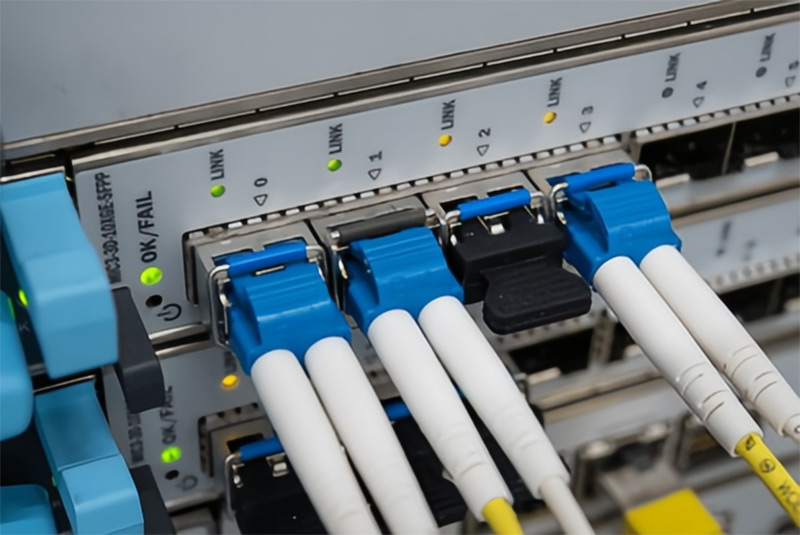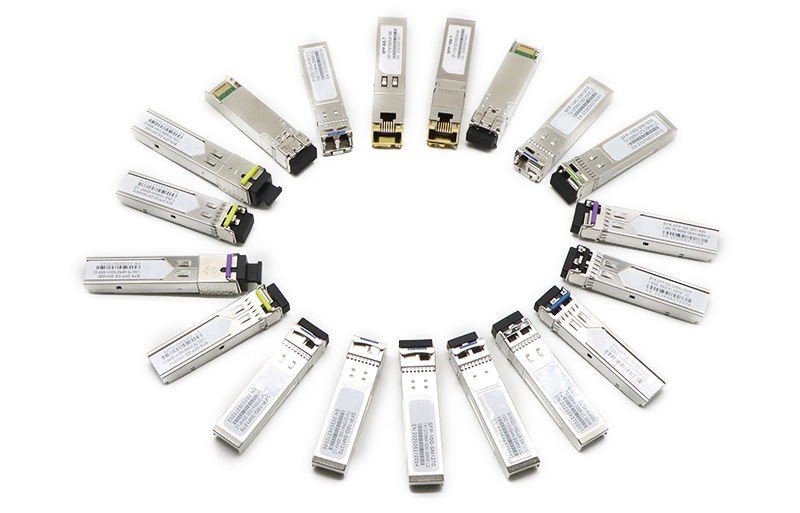Cisco SFP Compatibility: Expert Handbook for Matrix and Failure Prevention

Are you facing compatibility issues with Cisco SFPs that are affecting your network? Choosing the wrong module or simply not paying attention to the compatibility matrices could lead to unnecessary downtime and decreased performance. Understanding Cisco SFP compatibility will help you avoid those mistakes, promote the likelihood of successful connectivity, and ensure that you achieve the best uptime possible for your network. This article will discuss how to read compatibility matrices correctly, mitigate any potential deployment risks, and troubleshoot your connections in a way that ensures a reliable network.
Why Understanding Cisco SFP Compatibility Matters
Many users of Cisco products are left in the dark about compatibility issues regarding SFP options that could impact the performance and stability of their networks. Choosing the incorrect connection (or module) can create all sorts of network issues, including link failures, reduced throughput, or complete connection losses. Degraded connections lead to interrupted data flow and can significantly extend troubleshooting time and increase operational costs.
Finding the appropriate SFP goes far beyond the plug-in SFP concept. You also need to consider your device’s hardware model and firmware version and how that relates to the Cisco SFP you want to use. Think of matching an SFP to a device like matching a lock and key. Each SFP has a certain degree of fit in the module, which affects the operation; and like locking or unlocking a door, a mismatch can lead to a bad fit.
Using the Cisco SFP compatibility matrix ensures that your final components communicate with your hardware and software effectively. It helps a network manager identify and implement an SFP module that has been proven to work optimally with a specific network hardware configuration, improving reliability, uptime, and performance for businesses and critical business applications.
While choosing the wrong SFP may impact the time (downtime) it takes to meet a client’s expectation of productivity, it can have long-range effects on the client’s trust. When evaluating the overall health of a network, selecting the wrong SFP could adversely impact connectivity to the network, with real-time and long-term costs attributed to productivity. Overall, understanding Cisco SFP compatibility is important in order to preserve network health, reduce network failures, and maximize performance levels, which will help development, maintenance, and risk management for network professionals and organizations.

Cisco SFP Compatibility Matrix in Practice: How to Decode and Apply It Precisely
The first thing to know about the Cisco compatibility matrix is that you first need to understand what type of modules Cisco has. Cisco offers multiple SFPs, mainly 1G SFPs and 10G SFP+, each for different use cases in the networking arena. The 1G SFPs will handle the standard Gigabit Ethernet, and 10G SFP+s will operate in high-bandwidth situations, like a data center uplink or an enterprise backbone.
Each of the modules will have either “cisco sfp 10g lr s” or “cisco sfp-10g-sr,” which indicates different reach and wavelength. For instance, the “LR” (long reach) modules will go longer distances using single-mode fiber for your extended campus or metro application. On the other hand, the word “SR” (short reach) indicates you are going shorter distances using multi-mode fiber, and these are typically located in a data center.
Then, you will need to decode an official Cisco compatibility matrix. This will list which SFPs are supported on each Cisco switch model and their version of firmware. The switch will have both hardware and software compatibility, which is important to note because a module may be supported on a switch model, but only with a particular IOS/firmware version. This is similar to deciding what software version to run a particular app. You need compatibilities to ensure the app can operate.
Make sure when you are grasping the compatibility matrix that you have not only taken note of the switch platform version but also the software version, since there will be various modules with part numbers listed on it. If you can locate your device in the compatibility matrix and then check the part number for the allowed modules, you will have less of a chance of being caught off-guard by compatibility. Doing this will also help someone avoid the possibility of receiving a network error and malfunctioning due to the module being not supported or partially supported.
Lastly, you should prepare yourself to address common issues that come up with SFP Cisco compatibility. Firmware mismatches among the switch and module could create errors like “module not detected,” or an unstable link where it continues to drop up and down with the switch capabilities. In addition to firmware discrepancies, third-party modules may not always be recognized, which could cause issues with them not having Cisco’s embedded signature or coding.
There are ways to reduce your risk of price shopping and buying third-party compatibility without checking the compatibility and verification done by the vendor or documentation. Checking against compatibility matrices also helps with detecting bad orders before and during the deployment process. Furthermore, check with device logs following deploying the modules with commands like show interfaces transceiver and show logging for when errors originate from the module.
In conclusion, being able to navigate and understand the Cisco SFP compatibility matrix will entail understanding module types, being methodical in your reading of a matrix entry, and validating the SFP compatibility before and after the installation has taken place. Each of these items will reduce downtime, improve network reliability, and allow you to feel confident when integrating SFP modules outside of the built-in network solution.

Best Practices for Compatibility Management and Failure Avoidance
Effective management of compatibility with Cisco SFPs will require systematic practices. Creating a comprehensive inventory of the SFP model, serial number, and firmware version of each SFP, along with a record of where SFPs are deployed in the network topology, will help to avoid accidental deployment of an incompatible module later. Similar to a well-kept library, having a systematic process to track your SFP inventory will help to avoid the potentially expensive confusion between SFP modules.
It is also important to update firmware for devices that provide SFP support regularly. Firmware is responsible for the way that a switch recognizes and communicates with the SFP modules. If the firmware is not updated, you run the risk of running into errors or unpredictable behavior due to the module not being recognized at all. Having routine maintenance updates scheduled according to the corresponding Cisco compatibility matrices will reduce the risk of experiencing this type of problem.
Proper documentation of the compatibility status of each module will help facilitate both troubleshooting and module procurement. Effective documentation will allow IT teams to easily identify the potential fit of each module to network devices and firmware, therefore reducing time spent figuring things out in the event of an incident.
Finally, if possible, you should undertake compatibility testing before you deploy a module into production. Performing lab simulations will allow you to verify SFP module recognition on the device, link stability, and error rates. If you can identify potential problems with the SFPs and network devices before they are deployed, you will avoid surprises in an operational environment. In summary, testing is an important factor to help you assess any gotchas in your SFP solution and provide you with confidence in your choice of SFP solutions.
Employing the best practices, or a combination of the practices above, with thorough inventory management, firmware maintenance process, proper documentation of SFP modules, and proactive testing will help ensure your organization is prepared for a potential Cisco SFP failure. When executed effectively, these practices will keep your networks functional and optimized to use the value of compatibly deployed modules to their maximum potential.
FAQs
Why doesn’t my Cisco switch recognize certain SFP modules?
Recognition issues usually come up when using an incompatible module, using modules with old firmware, or possibly if the SFP is poorly connected to the device. Confirming compatibility and upgrading your firmware usually solves the issue.
How do I check third-party SFP module compatibility on my Cisco device?
Confirm compatibility based on the vendor documentation and the official Cisco compatibility matrix. Certification or test reports may also support third-party devices.
Can I also check compatibility of 1G and 10G SFP modules on a switch?
If the switch supports using 1G and 10G SFP modules, it is possible, but the performance will differ. Be sure to check compatibility in your device specifications.
How do I accomplish a firmware upgrade to support compatibility with SFP modules?
Locate the appropriate version of firmware from Cisco’s site, and be certain to read the instructions when operating an upgrade that can support compatibility with a newer module.

What do diagnostic messages related to SFP incompatibility on Cisco switches mean?
Cisco messages like “module not detected” or “link down” usually refer to a bad SFP module. Use our diagnostic command to determine the exact reason for the failure.
What are the risks of using unsupported SFP modules?
Unsupported modules might result in dropped links or increased error rates. In some cases, the warranty might also not cover the equipment if the configuration is unsupported, notably if the warranty states a Cisco module must be installed.
How is the Cisco compatibility matrix correctly used?
Determine and match your switch model with the compatibility listed SFP modules. Next, cross-reference the supported software version, and finally the part numbers.
What can I do to ensure that I can maintain compatibility for modules when upgrading the network?
Be sure to stay updated with Cisco releasing compatibility matrices, regularly do firmware upgrades, and select modules based on long-range technology plans.
Conclusion
Understanding what needs to be done for Cisco SFP compatibility is critical and could be crucial for a stable and functioning network. Proper use of SFP modules will reduce downtime and provide seamless connectivity. Taking proactive steps by asking for help from experts and sourcing SFP modules that are certified to work with your Cisco devices will ensure your network functions as planned.
